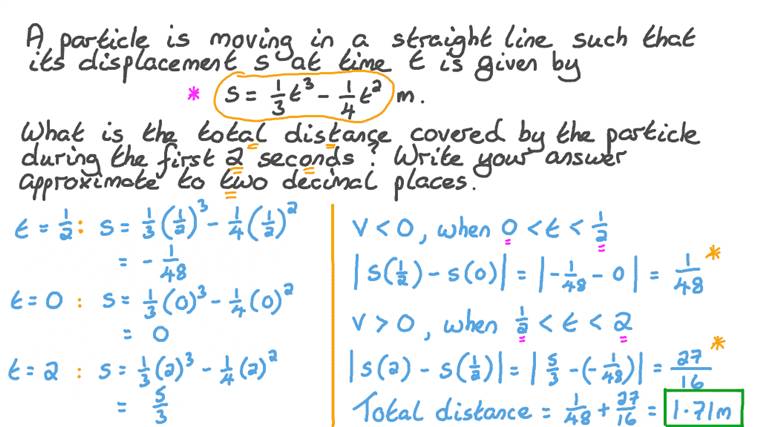Lesson Playlist: Applications of Derivatives on Rectilinear Motion Mathematics
-
Determining the Acceleration given the Velocity Expression of a Particle
-
Determining Whether a Particle Is Accelerating or Decelerating Based on a Displacement Expression in Terms of Time
-
Finding the Velocity of a Particle at a Given Time and the Time Interval during Which the Velocity is Decreasing
-
Finding the Magnitude of the Acceleration If the Velocity Is Uniform
-
Finding the Maximum Velocity of a Particle
-
Finding the Minimum Velocity of a Particle
-
Finding the Times when the Velocity of a Particle Equals Zero
-
Finding the Displacement, Velocity, and Speed of a Particle
-
Finding the Distance Covered by a Particle in a Given Time Period

















